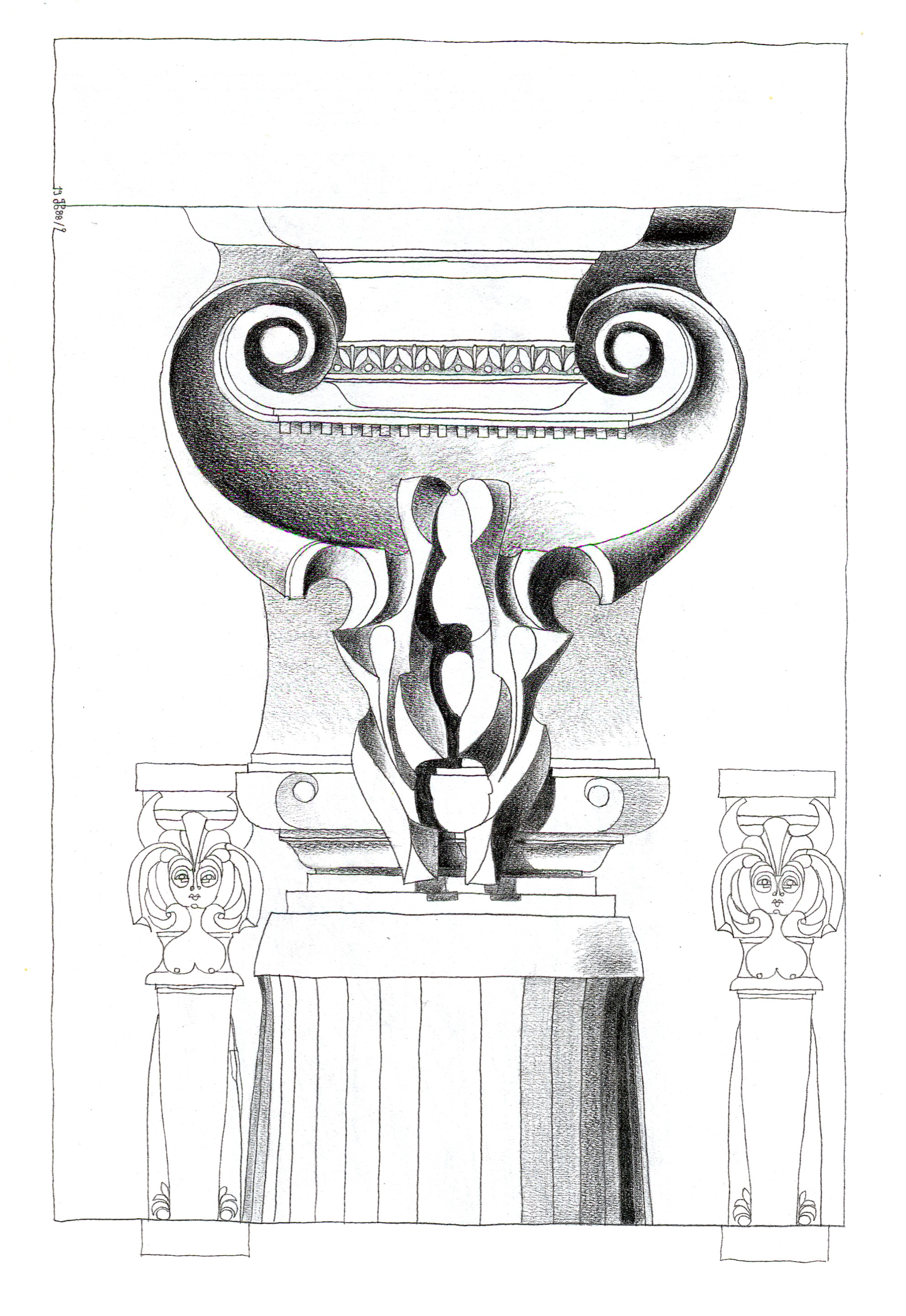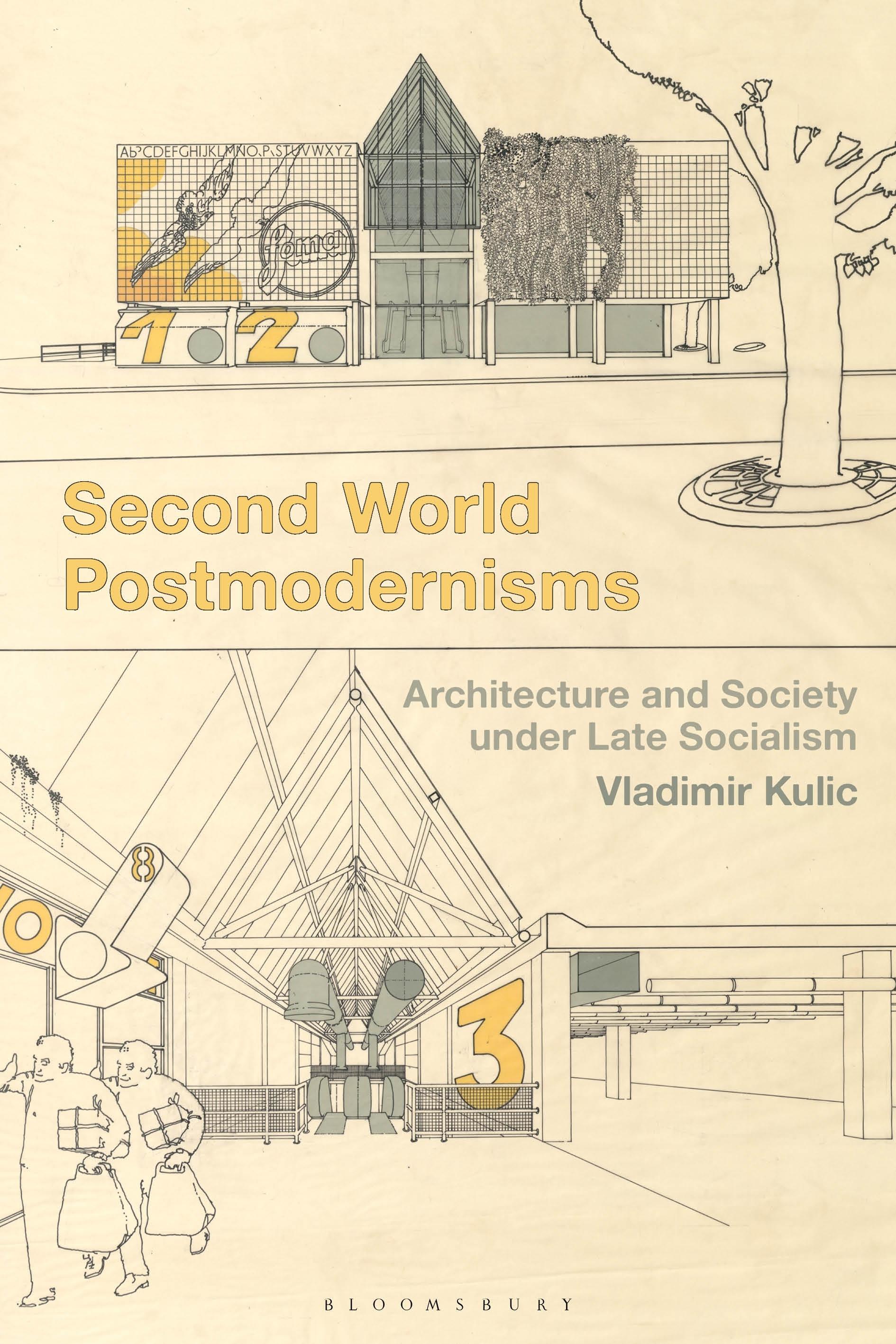AN uses affiliate links. If you purchase something through one of the links below, AN may receive a commission.
Second World Postmodernisms: Architecture and Society under Late Socialism
Vladimir Kulić (ed.)
Published by Bloomsbury
MSRP $40
There is little straightforward about postmodernism, much less its architectural strain. Historians of architecture can’t even agree on the timing of its emergence. While many trace its first stirrings to the late ’60s, when Robert Venturi penned Complexity and Contradiction, Charles Jencks offered up the much more precise moment of July 15, 1972, at 3:32 p.m. But if Jencks’s almost clinical chronology implies a particular place—the razed grounds of Pruitt-Igoe in St. Louis—his peers generally agreed that the context was North American, or perhaps postwar Japanese. Fredric Jameson, a literary critic with an eye for architecture, famously described the new “hyperspace” that developed under late capitalism as an aesthetic expression of its cultural logic. Yet for the most part he circumscribed the operation of this logic to the First World, in step with other theorists.
Second World Postmodernisms: Architecture and Society under Late Socialism, a collection of essays by various authors, challenges such received wisdom. From the late 1960s until the end of the Cold War, architects in the Eastern Bloc made a conscious effort to reintroduce ornament, historical reference, and irony into their projects. If they often carried out this work in dialogue with postmodern architects on the other side of the Iron Curtain, they could also be daring. Their designs, whether echoing their Western counterparts or sui generis, stemmed from a common impulse, contend the contributors to Second World Postmodernisms. Editor Vladimir Kulić, who co-organized a landmark 2018 MoMA exhibit on Yugoslavian architecture, lays out the stakes of their argument in an insightful introduction. “Postmodernism appears to be—to paraphrase Jameson—the cultural logic of late socialism,” writes Kulić, “whether in its revived commercial motivations, nationalist aspirations, or the self-conscious retreat from everyday practice into paper architecture.” Late socialism, he rightly notes, had a far more definite end date than its capitalist correlate.

Grouped thematically into three sections, the essays brought together here deal with a wide range of nominally socialist nations: the USSR, Czechoslovakia, Yugoslavia, Hungary, Poland, Estonia, Cuba, and China. While the first four fall under the heading “Discourses,” the next five cover “Practices,” with the remainder devoted to “Exchanges.” Each essay incorporates a wealth of material, however, so the lines between them can often seem to blur. Kulić’s introduction renders the collection more cohesive than it might have otherwise been, but the contributions still feel fairly scattershot at times. Reviewers have pointed out that “postmodernism” is never rigorously defined, since some authors treat it as a style, while others consider it a discursive device. Because the term’s polysemy is exploited throughout, one may guess the choice to leave it undefined is deliberate.
Several individual essays in Second World Postmodernisms are quite exceptional, but some are not, and the quality is uneven overall. Łukasz Stanek’s account of Polish architects working in Kuwait and Max Hirsch’s examination of two projects executed by a Japanese firm in East Germany are highlights. Andres Kurg’s study of the Estonian postmodernist Vilen Künnapu—who was equally at home designing a kolkhoz (collective farm) as a flower shop—is fascinating, as is the profile Kulić provides of Bogdan Bogdanović, whose quasi-surrealist sculptures and monuments dot the landscape of Serbia and Croatia. For his part, Fredo Rivera interprets postmodern architecture in Cuba by means of Fernando Ortiz’s concept of “transculturation” and has some interesting stuff on the propaganda supergraphics the Castro regime had painted onto the sides of older modernist buildings. Less successful is Ljiljana Blagojević survey of foreign texts and texts-in-translation that circulated among Yugoslavian architects, but this is of little more than bibliographic interest. Sadly, the text of her article is poorly rendered in English, marred by solecisms and awkward constructions that begin to impede its very readability.
Periodizing late socialism, a notion cribbed from Alexei Yurchak’s 2008 book Everything Was Forever, until It Was No More, proves a tricky task for all involved. If by this term the Sovietologist Yurchak meant everything that came after the death of Stalin in the USSR, Richard Anderson and Alla Vronskaya seem to date it to the close of the Brezhnev era in their respective essays. By contrast, Lidia Klein and Alicja Gzowska regard Poland’s late socialist period as starting circa 1970 in the typologies they outline of mass housing and church architecture. Maroš Krivý takes an even longer view of Czechoslovak postmodernism in his appraisal of theoretical debates about the “living environment,” with the Prague Spring as a turning point. Quite similarly, Ana Miljački focuses on post-1968 normalization in her chronicle of a Czech design team’s participation in the 1980 IBA competition in West Berlin, just one of several instances of “postmodernism’s jumping the wall.” Conditions varied from country to country, but certain constants emerge. Whether in the Soviet Union or elsewhere, the link that unites these experiences is decline.

Even more problematic is the figure of the Second World, a holdover from Cold War geopolitics. The First World meant the United States and its NATO allies, and the Second World consisted of the USSR and its Warsaw Pact allies, while the Third World referred to everywhere else. Depending on where one drew the dividing lines, Yugoslavia and Cuba might belong to the Third World; after all, the two countries cast their lot with the Non-Aligned Movement in the 1970s. Outside of the introduction, only Miljački’s essay questions this artificial framework of division, writing about “The Cultural Turn, One World.” She is at once sympathetic to, and critical of, the Jamesonian interpretation of postmodernism. “Jameson’s willingness to accept the three-world model,” Miljački writes, “shortcircuits the interpretive power of his own theory of entanglements between cultural, political, and economic developments…we do not live (and have never lived) in three worlds, but in a connected one.” Left unanswered is the basis of their interconnection, however.
What bound these different “worlds” together, then? If analogs to postmodernism in architecture thrived in the so-called Second World, and if Jameson was right that these forms expressed the logic of late capitalism, it follows that nominally socialist countries also obeyed the imperatives of accumulation. Centralized state planning was never antithetical to the trademark capitalist law of value, but this fig leaf, too, had already begun to fade by the ’60s. Kurg mentions the 1965 Kosygin reforms, which decentralized Soviet production and tried to motivate managers and workers by offering them profit/sales incentives. Yugoslavia’s economy was always somewhat contradictory, as autogestion or worker self-management entailed a mixture of market forces and state plans. Hungary, Poland, Czechoslovakia, and other Eastern Bloc countries never possessed as large a government sector as the USSR’s and required private actors to fill in some of the gaps. Perestroika under Gorbachev accelerated the process of privatization in Russia, while Deng’s market-friendly measures in China were in part facilitated by a postmodern architectural interregnum, as Cole Roskam documents in his contribution to the volume.
One of the most astute observations made in Second World Postmodernisms concerns the similarities between Stalinism and postmodernism in architecture, though this is hardly an exclusive insight. “One of the specificities of Second World postmodernism was that some of its manifestations developed in the looming shadow of (or even in direct reference to) the grandiose historicist architecture of Stalin’s era,” Kulić explains early on. “[D]efined at the time as socialist realism, that architecture was in a way the first ‘post/modernism,’ reacting as it did against the aesthetic revolution of the Soviet avant-garde during the 1920s.… Socialist realism foregrounded easy communicability and the embrace of historical conventions, which puts it in close proximity to some of postmodernism’s own tenets.” Richard Anderson goes over this in his chapter on “The Retro Problem,” a sort of Rezeptionsästhetik dedicated to the manner in which postmodern architecture was disseminated in the Soviet Union by Aleksandr Riabushin and Vladimir Khait. Anderson contends that such theorists “suspected the alleged permissiveness and dependence on historical forms characteristic of Western postmodernism might correspond to a desire among an older generation of Soviet architects to return to the ‘excesses’ of Stalinism.”
I myself noticed their congruity several years ago in a reflection on a pair of books by Boris Groys and Vladimir Paperny, where Stalinism in art and architecture was polemically identified as “the first postmodern style.” Following, as it did, the defeat of the vibrant avant-garde movement that existed in the first 15 or so years of the USSR, Stalinist architectural doctrine largely adopted the advanced building methods and materials of its vanquished foe while championing citation, ornamentation, and a complex formal mélange. Unlike the postmodern style that prevailed in the West four decades later, however, the architecture of the Stalin era possessed a strong utopian impulse. Likewise, the postmodern wave that arrived in Second World countries from foreign shores during the ’70s and ’80s retained something of this impulse, although it was soon to be exhausted. Kulić notes this in his article on Bogdanović, writing that “in contrast to the West, where utopian impulses survived only as ‘ghosts,’ Bogdanović’s oeuvre was devised in adamant support of an actual ‘utopian’ project: Yugoslavia’s self-managing and multiethnic socialism.” The basis of that project had all but eroded by 1990.
Reinhold Martin’s postscript to Second World Postmodernisms serves as a fitting coda to the volume, given all his past work on the topic. Martin is responsible for by far the most theoretically sophisticated reinterpretation of postmodernism to date, Utopia’s Ghost (2010), in which he argues that the specter of modernist projects to transform society haunted what came after. Here he repeats some of his assertions from this earlier book: “[P]ostmodernism is not a stylistic or strictly chronological category; it is an untimely discursive one.” Despite this untimeliness, Martin proposes a periodization of postmodern architecture that has it roughly coincide with the Cold War—beginning rather with the ratification of the United Nations Charter in October 1945. Allowing that the Second World examples dealt with in the collection may belong to “a postmodernist international,” he perspicaciously remarks that analogous architectures in the Third World were often referred to as regionalism. Numerous postmodern motifs, from the death of the author to the collapse of teleological metanarratives, are thus called into question by the extension of postmodernism’s architectural field.
Kulić’s stated intention of complicating the standard story of postmodernism can therefore be said to have succeeded. Though by no means as resounding a success as his MoMA show, Second World Postmodernisms makes its case well. In detailing postmodernism’s adventures on the other side of the Berlin Wall, the essays in this collection help complete the picture of a period too often forgotten in histories of design.
Ross Wolfe is a critic, historian, and educator living in New York City.











